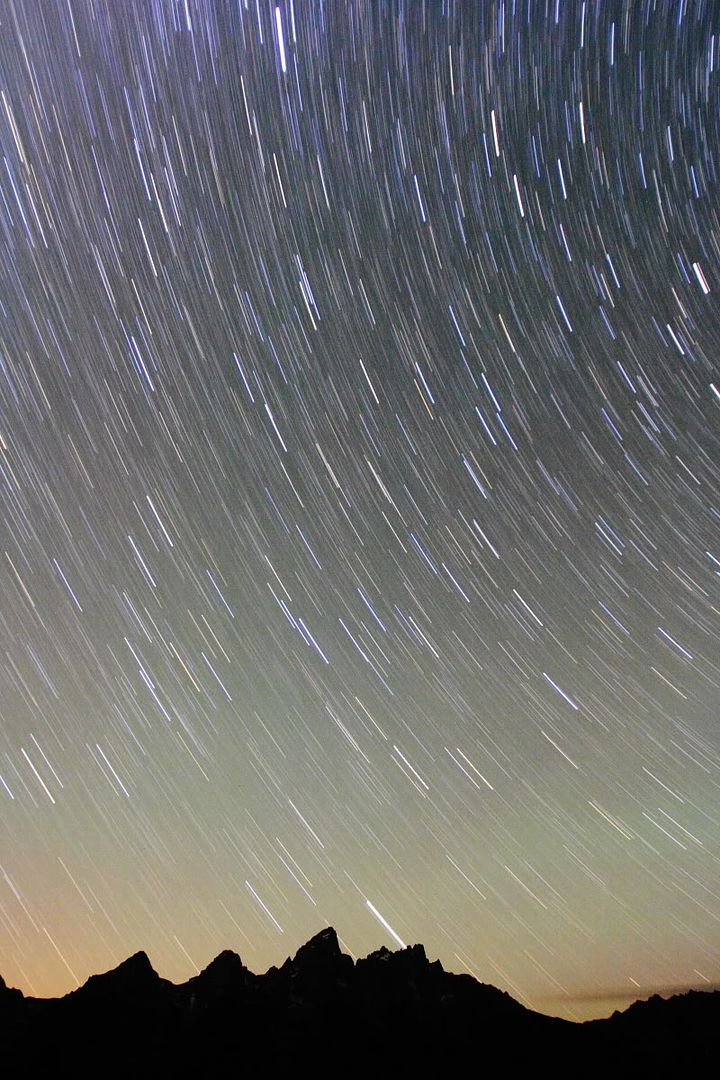I had a question for those of you experienced in shooting the night sky. To achieve a photo like this:
http://c.img-dpreview.com/0226687-01.jpg
in order to get the concentric circle effect, do you have to be focused on the pole star?
I had a question for those of you experienced in shooting the night sky. To achieve a photo like this:
http://c.img-dpreview.com/0226687-01.jpg
in order to get the concentric circle effect, do you have to be focused on the pole star?
Ben where are you to answer this one
I don't know this for sure, but doesn't the pole star not move very much no matter where you are? That's why it's the pole star?
If that's true, it shouldn't matter where you focus, the sky will always move in concentric circles around the pole star.
That makes "sense" to me logically, but I don't know if this is true in actuality.
R6 II --- RF 14-35mm f/4L IS --- RF 24-105mm f/4L IS --- RF 100-400mm F5.6-8 IS
70D --- EF-S 10-22mm f/3.5-4.5 --- EF-S 17-55mm f/2.8 IS --- EF 70-200mm f/4L IS --- EF 85mm f/1.8
Alex- that sounds right. For some reason, I was having a problem wrapping my head around it. Been a long time since astronomy class in college.
Originally Posted by gbc
I'm not sure exactly what you mean by "focused" -- I don't think you're referring to focus distance, since as you know, all stars are at the same focus distance (infinity). I think you are referring to position in the frame.
In order to see concentric circles, all you need is to have one of the poles (north or south) somewhere in the frame. If you put it in the center of the frame, then the concentric circles will radiate out from the middle. If it's slightly to one side, as in your example, then they will center around that position.
Hope that helps,
Pretty much spot on as Daniel put it. You need to be looking directly at polar north/south to get the best concentric effect.
You'll notice too that the further away you go from the polar origin the longer the star trails will be as the radius of curvature increases.
To get a decent trail you need to expose the equivalent ofat least an hour of the sky (my opinion anway). The reason I say "equivalent of" is that opening the shutter for this longyou riskone (or all) of three things:
1 - the image will be super super incredibly super dupernoisy (that's a bad thing btw) because as the sensor heats up from gathering all that info for such a long time excess digital noise is introduced. So you won't get a usable photo.
2 - you will turn your camera into a molten blob of plastic resembling an under exposed dog poo. That's a slight exaggeration (slight) but there is a real risk of overheating the internals on the camera and frying circuit boards/ chips etc.
3 - you will run out of battery. Especially with long exposure noise reduction (LENR)on as it will need roughly the same time as the exposure to complete LENR.
If I take a photo of the night sky and want star trails I generally do a couple of test shots to work out the best exposure. i.e exposing the stars enough to see them brightly but not introducing too much ambient light into the sky/scenery - sometimes 10-15sec is enough depending on the moon.
Once I've found the best exposure I'll switch OFF LENR, set the camera in continuous shooting mode with a remote trigger and leave it going to an hour or two. This way if the battery dies mid shot you don't lose a whole lot.
Then you need to merge all of the photos into one using either photoshop or another stacking application. I'vegot the best results using the startrails.exe app.
Remember to keep something interesting in the foreground that you can expose using a torch, or better yet take a couple of shots as the sun goes down and you'll get some beautiful colours.
I've scoped out a nice spot and I'm going to head there over the weekend to get a shot or two... hundred. I'll post something up if I think it's worthy.
Best thing to do is have a go and experiment. Have fun!
http://www.flickr.com/photos/ben_taylor_au/ www.methodicallymuddled.wordpress.com
Canon 5D Mark III | Canon 5D Mark II | Samyang 14mm f/2.8 | Canon 35mm f/1.4L USM | Sigma 85mm f/1.4 EX DG HSM |Canon 70-200mm f/2.8L IS II |Canon 2 x Teleconverter III | Canon 580 EX II Speedlite | Really Right Stuff TVC 34L | Really Right Stuff BH55 LR | Gorillapod Focus | Really Right Stuff BH 30
Originally Posted by btaylor
With long exposures, photon SNR goes down. But I think you're talking about thermal noise in particular. Canon's long exposure noise reduction does a very good job of controlling this. I don't think I've ever done an hour, but here is a 43 minute exposure of the dumbell nebulathat, for all its other problems, is not particularly noisy:
[img]/cfs-file.ashx/__key/CommunityServer.Components.UserFiles/00.00.00.25.93/m27_5F00_43_5F00_min_5F00_unguided.JPG[/img]
43 minutes 800mm f/8
This was taken from my back yard during summer, when thermal noise is at its worst.
I agree with your main point, though: it is often prefereable to stack.
I don't have access to the time information off hand, and I missed the north star (wasn't really thinking about it, to be honest, I just wanted to see what I could get),
but I think this was like a 20 minute exposure or something, with a Rebel XT

I'm digging this one Colin, seems you picked the perfect time to get this one. Great shot. The previous nebula shot is awesome too.
-Shea
Nice one, Colin. Did you use long exposure NR? (You must have... either that or it was cold out [])